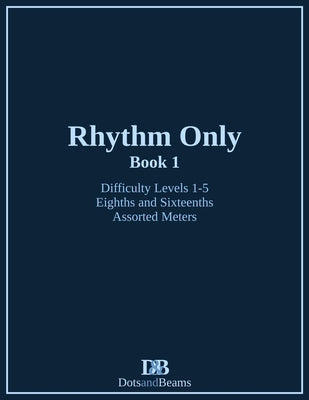Before you leave...
Take 20% off your first order
20% off
Enter the code below at checkout to get 20% off your first order
Discover summer reading lists for all ages & interests!
Find Your Next Read

This collection presents the user with a series of increasingly difficult rhythms on a single pitch.
The rhythmic material in this series is organized into 10 difficulty levels. Each difficulty level contains four exercises in each of the following time signatures: 2/4, 3/4, 4/4, 6/8, 9/8, and 12/8. This gives exercises in 2, 3, and 4 beats per bar in both simple and compound meters. The first two exercises of each time signature have no ties while the remaining two exercises in each time signature include ties. In Book 1 of this series you'll find difficulty levels 1 to 5, while Book 2 completes the set with levels 6 to 10.
To curate the difficulty levels I looked at all of the possible ways we can use eighth-notes and sixteenth-notes to subdivide a single beat without the use of tuplets. The lowest difficulty level is comprised of the easiest of these one-beat rhythmic groupings. Subsequent difficulty levels include more challenging groupings while continuing to use the easier ones from previous chapters. In this way the difficulty levels are cumulative: level 1 uses only the easiest groupings, but by level 9, all of the possible rhythmic groupings have been introduced. Level 10 increases the density of challenging groupings by omitting the easier ones. The introductory page of each chapter introduces the rhythmic groupings that will be added or omitted in that chapter. On some occasions rhythmic groupings are respelled; however, these new spellings are not formally introduced at the beginning of the chapter.
The exercises in this collection are intentionally random and difficult to internalize. In keeping the rhythmic material as unpredictable as possible the door is left open for the materials to be used in many ways. It also forces the user to process every rhythm as its own event without relying on pattern recognition for help.
Some suggestions for how to use this book include:
As with any of the Dots and Beams books, the uses for this particular collection are limited only by the imagination of the musician using it. I encourage anybody using this book to find as many uses for these exercises as possible.
Thanks for subscribing!
This email has been registered!
Take 20% off your first order
Enter the code below at checkout to get 20% off your first order